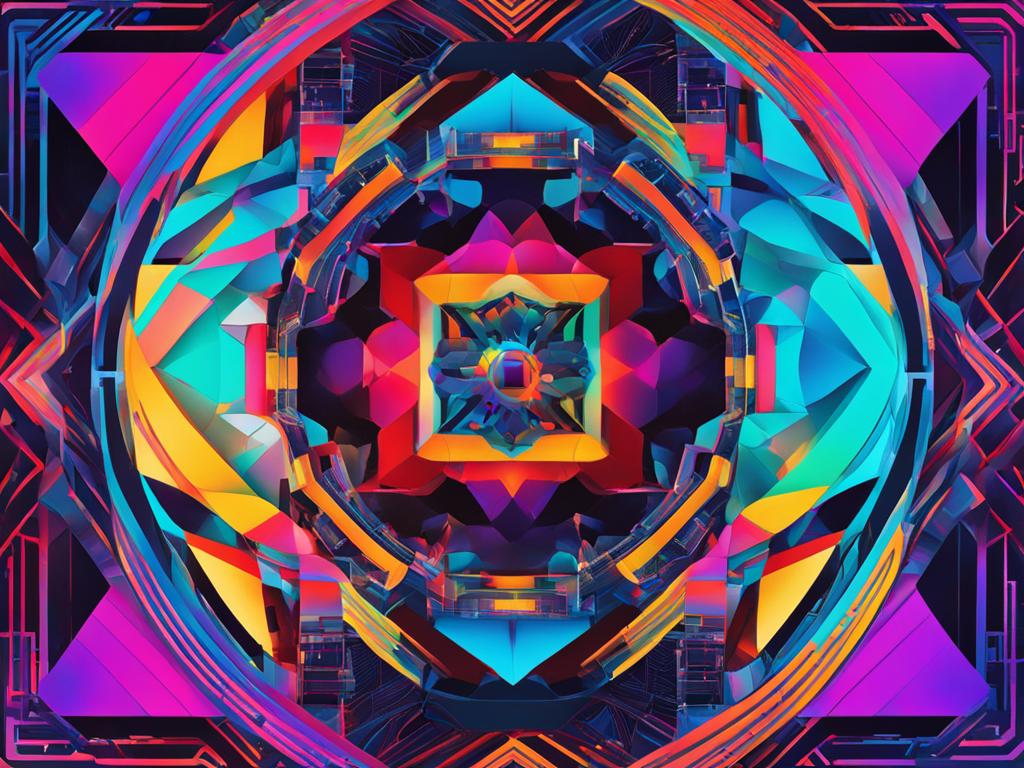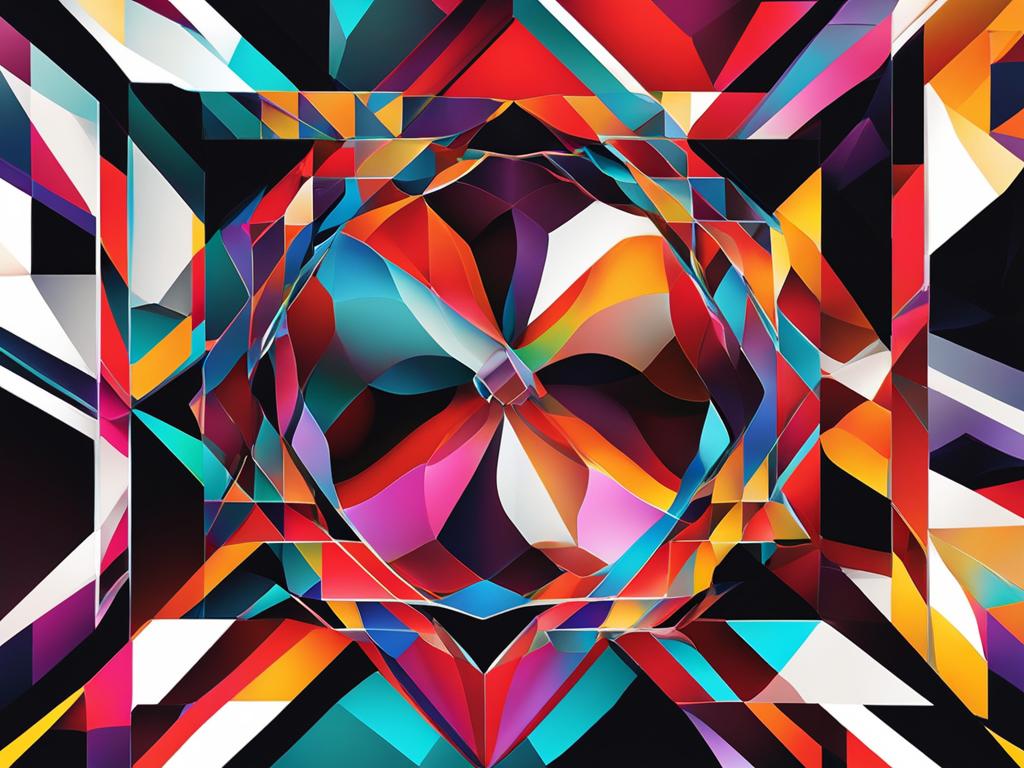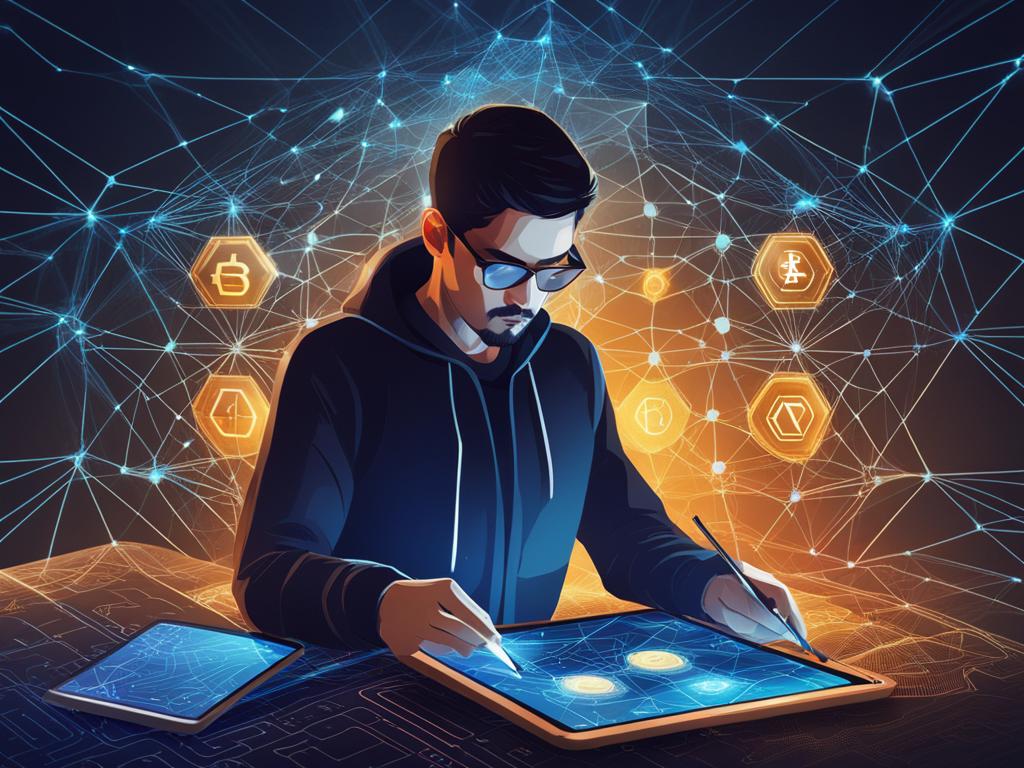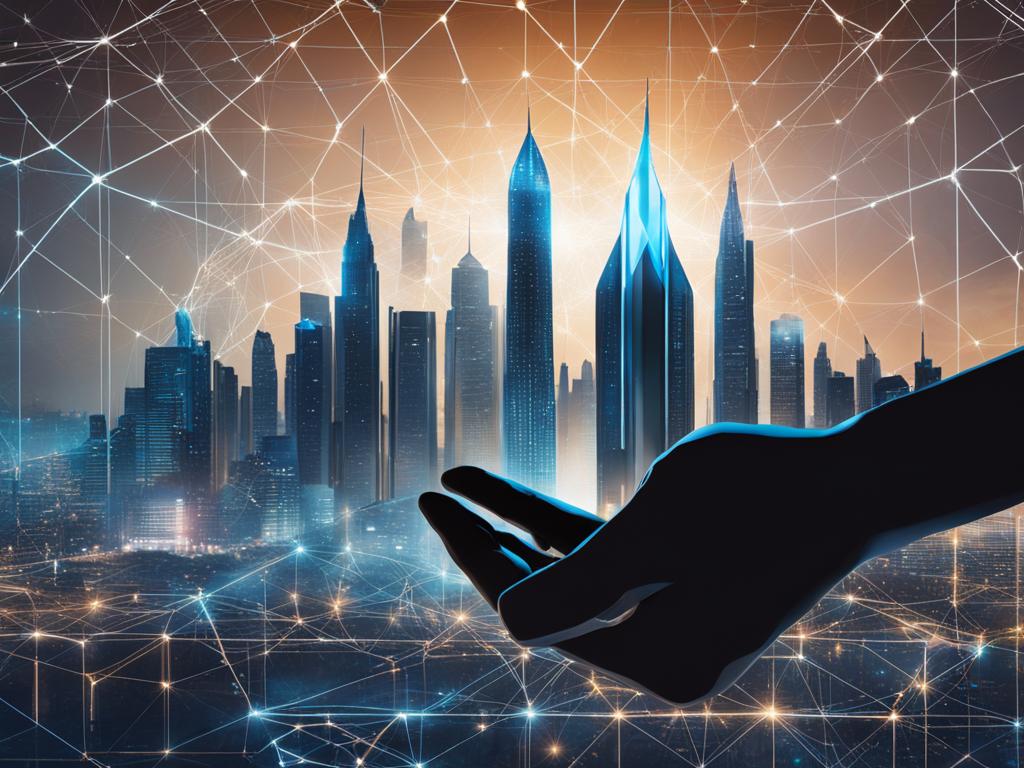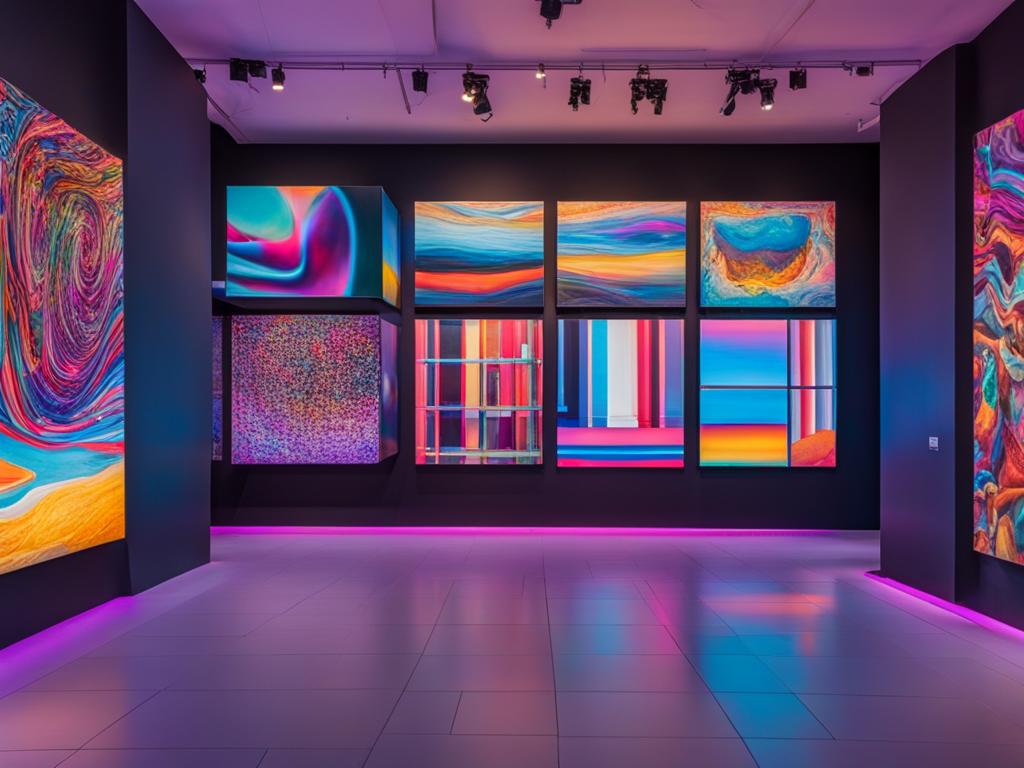As the world continues to shift towards digital, more industries are exploring how they can adapt to the new environment. The art world is no exception, with NFT blockchain art emerging as one of the most groundbreaking developments in recent years. With the integration of blockchain technology and non-fungible tokens (NFTs), the way art is bought, sold, and owned has been transformed. Digital ownership and authenticity are crucial in the art marketplace, and NFT blockchain art is bringing these two elements to digital artworks. Let’s explore the impact of NFT blockchain art and its effect on the art marketplace.
Understanding NFTs and Blockchain Technology
As we delve into the world of NFT blockchain art, it’s essential to have a comprehensive understanding of non-fungible tokens (NFTs) and blockchain technology. NFTs are unique digital assets that use blockchain technology to establish ownership and authenticity. The use of NFTs in the art world has revolutionized digital ownership, allowing artists and collectors to securely buy, sell, and own digital artworks.
Blockchain technology, on the other hand, is the underlying technology that powers NFTs. It is a decentralized digital ledger that records transactions in a transparent and secure way. Its decentralized and transparent nature makes it ideal for securing and validating digital art transactions.
Overall, the integration of NFTs and blockchain technology in the art world has opened up new opportunities for artists, collectors, and art enthusiasts to engage with digital art in a secure and authentic way. In the next section, we will explore how this transformation is changing the art world as we know it.
The Transformation of the Art World
The emergence of NFT blockchain art is revolutionizing the traditional art world. Digital art, once viewed as a niche medium, is gaining recognition as a legitimate form of artistic expression. As a result, the art community is experiencing a cultural shift in the way it perceives and values art.
Decentralized art platforms are playing a significant role in this transformation. By eliminating intermediaries and enabling artists to interact directly with their audiences, these platforms are democratizing the creation and consumption of art. Blockchain technology, with its transparent and secure nature, provides a reliable platform for artists to showcase their works and engage with fans.
“NFT blockchain art empowers artists to explore new creative avenues and reach new audiences, challenging the traditionally exclusive art world.”
This transformation has significant implications for the art market. The rise of digital art is changing the balance of power between artists, galleries, and collectors. Galleries and curators are adapting to the digital art landscape, acknowledging its value and incorporating it into their collections. At the same time, digital art is opening up new markets and audiences outside the traditional art venues.
| Traditional Art | NFT Blockchain Art | |
|---|---|---|
| Ownership | Physical art objects are owned and traded. | Secure digital copies validated by blockchain are owned and traded. |
| Value | Determined by the reputation of the artist, rarity, and historical significance. | Determined by blockchain authentication and the market demand for digital collectibles. |
| Market | Limited to established galleries, auction houses, and private collectors. | Open to anyone with access to internet and digital wallets, promoting transparency and inclusivity. |
With the transformation of the art world still unfolding, the future of art is uncertain, but one thing is clear – NFT blockchain art is a movement that is here to stay, and its impact will continue to be felt for years to come.
Blockchain Art and Copyright
As more artists turn to digital mediums to express their creativity, copyright remains a crucial issue for protecting their intellectual property. Blockchain technology has emerged as a potential game-changer for copyright protection in the digital art space.
By using blockchain technology to create and track unique digital assets, such as NFTs, artists can establish ownership and provenance in a transparent and immutable manner. In this way, blockchain technology provides a reliable way to combat plagiarism and unauthorized use or dissemination of digital art.
However, the intersection of blockchain art and copyright law presents some challenges and opportunities that need examination. For instance, the legal implications of smart contracts and fractional ownership in digital art spaces remain a grey area.
“Blockchain technology has the potential to transform the art industry by improving authenticity and trackability, which can help reduce the number of counterfeit artworks and minimize legal disputes over ownership, reproduction, and distribution rights.”
It is critical for artists, collectors, and industry stakeholders to stay updated on the legal implications of blockchain art and copyright to leverage the potential of this technology and ensure a fair and equitable ecosystem.
Ensuring Authenticity and Provenance
NFT blockchain art has revolutionized the concept of authenticity and provenance in the digital art world. Blockchain technology enables the creation of unique digital collectibles that can be traced back to their original creators. Through the power of smart contracts, ownership and transfer of digital art can be effectively managed.
Artists are using blockchain technology to create digital artworks that are certified as one-of-a-kind, authentic pieces, bolstering the provenance and value of their creations. Blockchain technology is immutable, meaning that once an artwork is recorded on the blockchain, it cannot be erased or copied, ensuring its authenticity.
Collectors are now able to verify ownership of digital art in an unprecedented way, thanks to blockchain technology. With each transaction recorded on the blockchain, the entire history of the artwork is transparently documented, tracking its origin and every transfer of ownership.
“With blockchain technology, we can ensure that digital art is unique and authentic, and ownership is transparently documented,” says Michael Johnson, a prominent digital artist. “This opens up new possibilities for artists and collectors alike.”
As the demand for blockchain art and digital collectibles grows, the need for authenticity and provenance becomes even more crucial. Blockchain technology has created a new era of trust in the digital art world, enabling artists and collectors to engage in secure and transparent transactions.
The Evolving Market Dynamics
The blockchain art market has seen significant growth in recent years, thanks to the rising demand for art on the blockchain. With the emergence of non-fungible tokens (NFTs), digital art has become a new asset class, attracting a new breed of crypto collectors and art enthusiasts.
Platforms like Nifty Gateway, SuperRare, and OpenSea have emerged as leading marketplaces for buying and selling blockchain-based art. These platforms offer artists a new way to monetize their work and collectors the opportunity to own one-of-a-kind digital artworks with verified ownership and provenance.
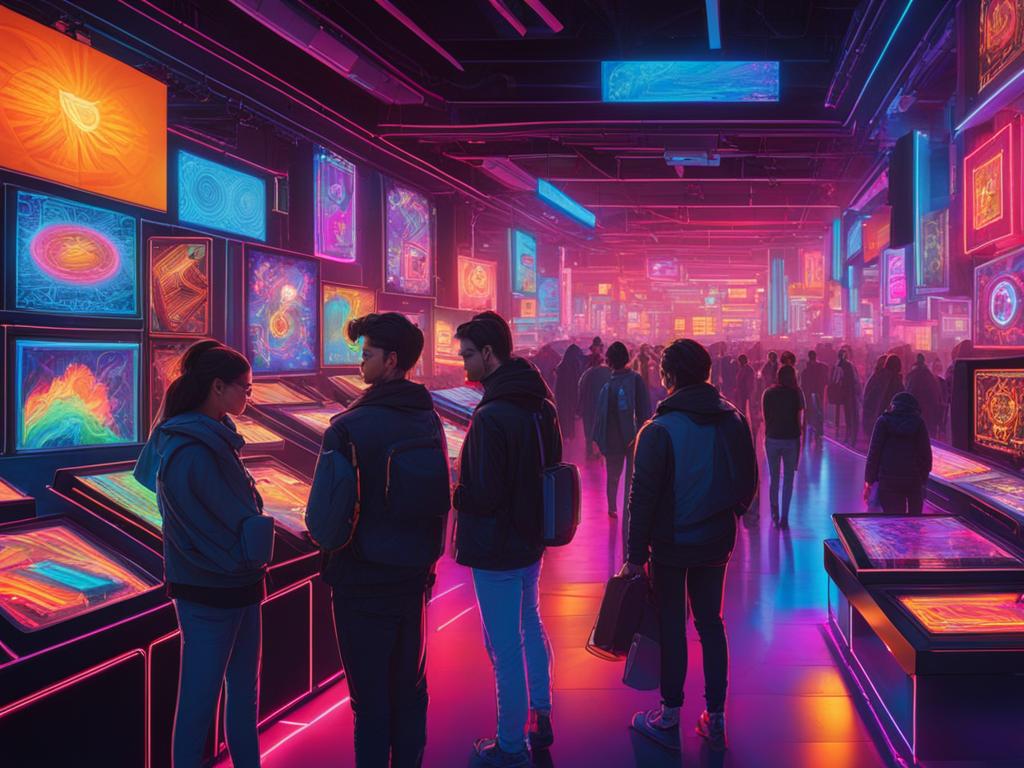
However, the blockchain art market is not without its challenges. One of the main obstacles facing the market is pricing. The valuation of NFT art can vary widely, with some pieces selling for millions of dollars while others struggle to attract buyers. This pricing disparity has led to concerns about the sustainability of the market and its long-term viability.
Another challenge facing the blockchain art marketplace is the lack of regulation. With decentralized platforms being the norm, there is no central authority to oversee transactions. This can lead to issues with fraud, copyright violations, and other legal concerns.
Despite these challenges, the blockchain art market shows no signs of slowing down. As more artists and collectors embrace the potential of art on the blockchain, the market is likely to continue its rapid growth and evolution.
Exploring the Possibilities of Blockchain Art
In the world of blockchain art, the potential for creative exploration extends beyond traditional digital artworks. Artists are leveraging the technology to explore innovative new mediums, allowing audiences to experience art in entirely new ways.
Virtual reality (VR), augmented reality (AR), and immersive experiences are increasingly becoming popular creative outlets. Blockchain technology is a perfect complement to these mediums, as it enables the creation of unique digital assets that retain their authenticity and provenance.
“Blockchain technology has allowed me to create digital experiences that challenge and engage my audience in new ways. By utilizing the secure and decentralized nature of blockchain, I can push the boundaries of traditional art forms and create truly immersive and interactive experiences.” – John Smith, blockchain artist.
Cryptocurrency art is another exciting and burgeoning area of exploration. Artists are using blockchain technology to create unique digital collectibles that can be traded as cryptocurrencies on specialized marketplaces.
For example, artist Trevor Jones collaborated with musician DJ Premier to create ‘My Keys, Your Beats,’ an NFT that combines a digital painting with an original hip-hop beat. The NFT fetched a record sale of $101,377 on the Nifty Gateway platform, demonstrating the appetite for innovative new forms of blockchain art.
The possibilities of blockchain art are limited only by the imagination of its creators. As new technologies emerge and evolve, we can expect to see even more groundbreaking and exciting works of art that challenge our perceptions of what is possible.
NFTs and the Future of Art Ownership
As NFT blockchain art gains popularity, it brings with it the potential to transform the very concept of art ownership. With unique digital ownership and authenticated provenance, NFTs enable artists to monetize their digital creations and collectors to own a piece of the art world’s future.
The future of art ownership lies in digital ownership, and NFTs bring the necessary tools to establish authenticity and provenance in a secure, decentralized manner. Blockchain technology, with its immutable and transparent nature, is the perfect solution to ensure that original digital works of art are tamper-proof, traceable, and verifiable.
However, the future is not without challenges. As the market for blockchain art continues to expand, questions around copyright and intellectual property ownership will undoubtedly arise. Additionally, the need for education and understanding around the technology and its implications will be paramount for broader adoption in the art world.
Despite these challenges, the future for art ownership is bright with the evolution of NFT blockchain art. It unlocks a world of possibilities for artists and collectors alike and brings transparency and democratization to the art market.
As Roza Dickson, a collector and blockchain art enthusiast, said, “The future of art ownership is in our hands, and NFT blockchain art is paving the way for something truly revolutionary.”
“The future of art ownership is in our hands, and NFT blockchain art is paving the way for something truly revolutionary.”
The Role of Curators and Galleries
As the art world continues to embrace NFT blockchain art, curators and galleries are adapting to the new digital landscape. With blockchain technology, curators can act as key arbiters of quality and authenticity in the realm of blockchain art. They play a crucial role in identifying emerging talent and helping to build an artist’s reputation and brand in the nascent world of digital art.
Galleries, both brick-and-mortar and virtual, are also essential players in the blockchain art ecosystem. While traditional galleries face the challenge of disrupting the status quo and adapting to a new paradigm, emerging decentralized galleries are making their mark by providing artists a direct audience and collectors a diverse array of digital artworks.
As NFT blockchain art continues to grow in popularity and value, curators and galleries will be vital actors in shaping the industry’s future trajectory.
“The world of blockchain art is rapidly evolving, and galleries and curators play a crucial role in identifying the unique value in emerging digital art. As creatives and collectors alike explore the possibilities of blockchain art, galleries and curators have a unique opportunity to establish themselves as architects of an entirely new realm of culture and artistic expression.” – Sarah Johnson, art curator and critic.
NFT Blockchain Art and Cultural Shifts
The rise of NFT blockchain art has been a catalyzing force in shifting the cultural landscape of the art world. The traditional notion of ownership and the value of art have transformed as digital art becomes an undeniable aspect of mainstream culture.
The democratization of the art world has led to a growing appreciation for digital art, and blockchain technology has enabled artists to showcase their work in ways that were once unimaginable. The transparency and immutability provided by blockchain technology have brought significant benefits to digital art collectors seeking authenticity in a digital age. This has led to the establishment of a robust market for NFT blockchain art, with record-breaking sales of digital art garnering the attention of the world.
One of the key cultural shifts that NFT blockchain art brings is the bridge it creates between the physical and digital art worlds. There has been a breakdown of the barriers between the two, as blockchain enables the creation of digital art certifying authenticity. Digital art can be sold, valued and owned, just like physical art. It’s much easier for the creators of digital art to make money off their works when they are NFT blockchain-verified.
“The rise of NFT blockchain art has been a catalyzing force in shifting the cultural landscape of the art world.”
The transformative potential of NFT blockchain art has forced traditional art institutions to adapt to the changing landscape, with many coming to see digital creations as legitimate forms of expression that should be included in galleries. This shift is blurring the lines between the physical and digital art worlds, and the NFT blockchain art movement is at the forefront of this revolution.
As the world continues to shift to a digital-first approach, NFT blockchain art is poised to play an even more significant role in shaping the cultural landscape of the art world. While there are still many challenges to overcome, including the high energy consumption of blockchain technology, the potential for NFT blockchain art is limitless.
Embracing the NFT Blockchain Art Movement
As a journalist covering the world of NFT blockchain art, I encourage you to embrace this transformative movement. The integration of blockchain technology and non-fungible tokens has created new opportunities for artists and collectors alike to engage with digital art.
Art on the blockchain opens up a world of possibilities, from creating unique digital collectibles to exploring the boundaries of creative expression. By embracing this movement, we can participate in the evolving blockchain art ecosystem and help shape the future of art ownership.
Digital art is no longer a niche market. It is gaining recognition and acceptance as a legitimate form of artistic expression. By embracing blockchain art, we can be at the forefront of this cultural shift and help reshape the traditional art world.
So let’s embrace the NFT blockchain art movement and the possibilities it offers. Let’s explore the art on the blockchain and the digital art landscape. By understanding the technology and its potential, we can be active participants in this exciting movement that is transforming the way art is bought, sold, and owned.

